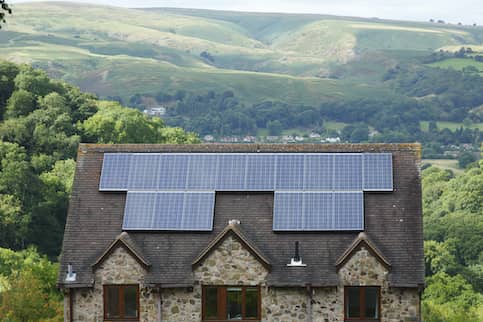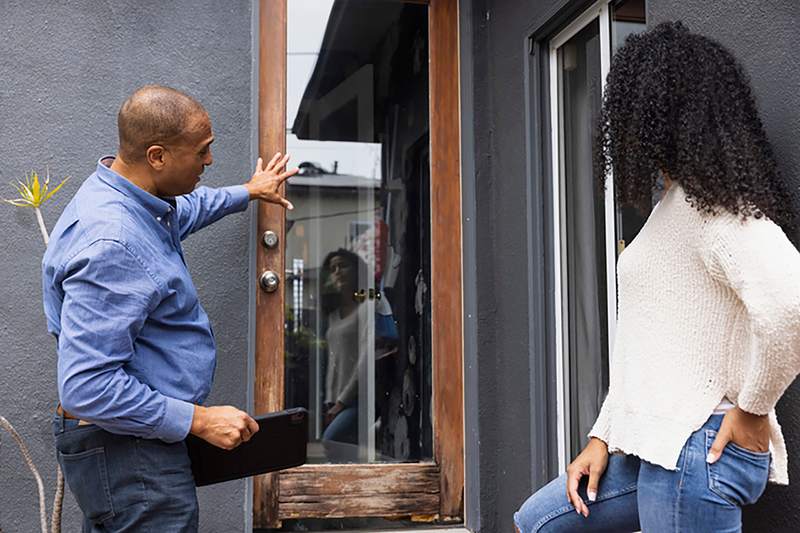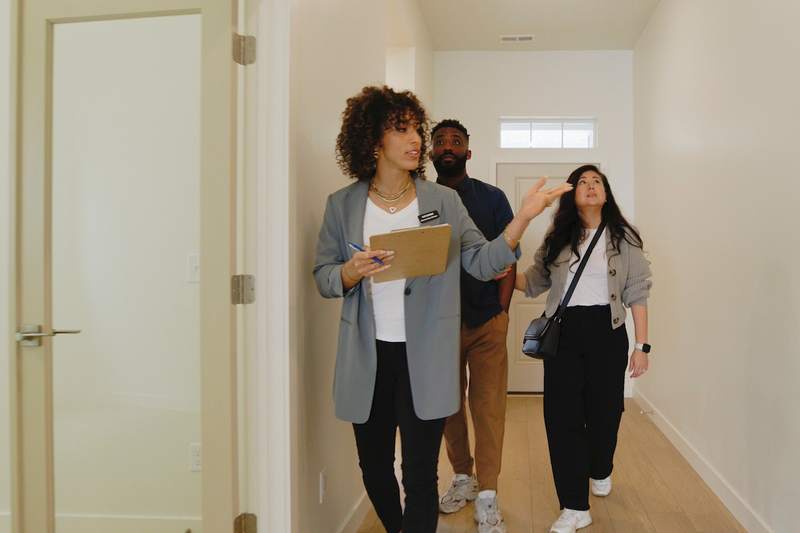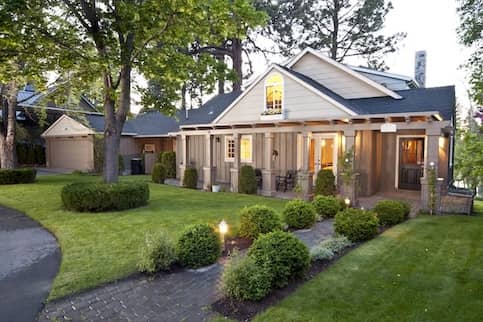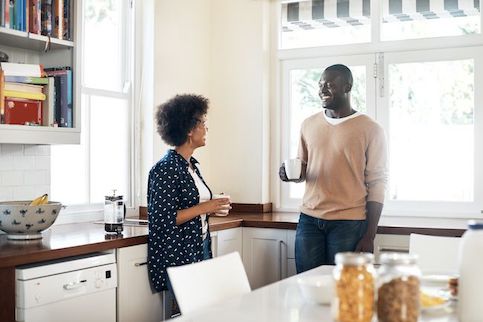Buying a home for the first time can be overwhelming, and it’s hard to know what you can afford to spend. Creating a housing budget outlining your income and expenses will help you determine the type of house you can afford.
Without a detailed budget, you may overextend yourself financially and end up with a house you can’t afford. If you need some help getting started, this article will explain how to budget for a house.
Home Buyer’s Guide
Follow our step-by-step guide to learn how to buy a home.
How Much Should You Budget For Buying A House?
Looking at all the costs involved in buying a house can help you determine the type of property you can afford. When you’re buying a home, you have to think about your down payment and closing costs. Going forward, you’ll need to budget for your monthly mortgage payment, utilities and the cost of home repairs.
As you budget for a house, consider using the 28/36 rule to determine your monthly expenses and debts. The rule states that no more than 28% of your gross monthly income should cover your housing costs, and no more than 36% should go toward bills like student loans.
What Is The 28% Rule?
As stated, the 28% rule states that no more than 28% of your gross monthly income should go towards your mortgage payments. Your gross monthly income is your total monthly income before taxes or deductions are taken out.
For example, let’s say your gross monthly income is $6,000. According to the 28% rule, you shouldn’t spend more than $1,680 on your mortgage payment. That means you need to find a house that will fit within these budgeting constraints.
This rule is a helpful guide but may not be feasible if you live in a city with a high cost of living. And the 28% rule isn’t a universal recommendation — when it comes to a borrower’s debt-to-income ratio (DTI), the Federal Housing Administration (FHA) recommends that 31% of a homeowner’s income goes toward home costs, including insurance and taxes.
See What You Qualify For
Buy A Home
Discover mortgage options that fit your unique financial needs.

Refinance
Refinance your mortgage to have more money for what matters.
Tap Into Equity
Use your home’s equity and unlock cash to achieve your goals.
How To Budget For A Home
When you set your home buying budget, there are one-time and ongoing expenses you need to plan for. Understanding what goes into buying and maintaining a home will make this process easier. Here are five steps to create a budget for buying a house:
1. Review Your Income And Expenses
Calculating your income and expenses will help you determine how much room you have in your budget each month. Most people have fixed and variable costs each month.
Fixed expenses are recurring expenses that change very little from month to month. Your rent, car payments, insurance payments, and subscriptions are all examples of fixed expenses. Variable costs change from month to month, making them harder to budget for. Groceries, gas, and credit card payments are all examples of variable costs.
If you find that you’re maxed out on your budget, you may need to look for ways to cut your spending. You might consider looking for a cheaper place to live or eliminating eating out while you save for a house.
2. Find Out How Much House You Can Afford
When deciding how much house you can afford, you need to consider your income, the current interest rates, and your credit score. According to Freddie Mac, you can estimate an affordable range for a house by taking your gross annual income and multiplying it by 2.5.
But the current interest rates also have a big impact on the type of house you can afford. When interest rates are low, it makes buying a home more affordable and increases your purchasing power.
And someone with good to excellent credit will qualify for the best rates and terms on their mortgage. If you need help determining how much house you can afford, this home affordability calculator can help break down the potential costs.
3. Plan For Your Down Payment
Your down payment will play a significant role in how much you pay for your house. The larger your down payment, the lower your monthly mortgage payments will be because you’ll borrow less money.
Plus, borrowers with a down payment of less than 20% will be required to purchase mortgage insurance. Private mortgage insurance (PMI) protects your lender if you stop making your mortgage payments.
However, saving 20% for a down payment is difficult for most borrowers, especially if you live in an area with high housing costs. According to the Federal Reserve Bank of St. Louis, the median price for a house in the U.S. is $431,000. To make a 20% down payment, you’d need to save $86,200.
You can save for a down payment by automating your savings into a high-yield savings account. You can also look into down payment assistance (DPA) programs at the state level – just know that not all lenders accept all DPA programs. But ultimately, you don’t have to make a 20% down payment — you can qualify for a conventional loan with a down payment as low as 3%.
4. Consider Your Closing Costs
Closing costs are fees you’ll pay when you close on your home. These costs include things like your title insurance, origination fees, mortgage points, and other fees charged by your lender and third-party providers.
Closing costs typically cost 3% – 6% of the home’s purchase price. If you’re buying a $450,000 home, you can expect to pay between $13,500 and $27,000 in closing costs.
If you’re concerned about your ability to pay your closing costs, you may be able to get your closing costs waived. Instead of paying these costs out of pocket at closing, you can roll them into your mortgage.
If you roll $13,500 in closing costs into your mortgage, your home will now cost $463,500. This means your monthly mortgage payments will be higher, so you’ll need to account for this in your budget.
5. Factor In Homeowner Expenses Beyond Your Mortgage
Homeownership comes with additional costs that you may not be used to, especially if you’ve been renting. You’ll have to pay for repairs and maintenance, which could cost between 1% and 4% of your home’s total value. You’ll also need to account for things like homeowners insurance, utilities and property taxes to determine the costs of owning a home.
Home Buyer’s Guide
Follow our step-by-step guide to learn how to buy a home.
Housing Budget FAQs
For first-time home buyers, budgeting for a house isn’t easy, but it’ll set you up for success down the road. If you have more questions about how to budget for a house, the following FAQS may help:
What should I do if I can’t afford to buy a house?
If you can’t afford to buy a house, you can put your home search on hold so you can spend more time saving for a down payment and emergency fund. You can also look into government-backed loans that come with more favorable loan terms.
What’s the 50/30/20 rule?
The 50/30/20 rule is a budgeting principle that allocates 50% of your income toward necessities like your mortgage, groceries, and utilities. You’ll budget 30% of your income toward wants like eating out or subscriptions. And the final 20% of your budget will go toward savings and investments.
How much should I put down on a house?
Most lenders will recommend that you make a 20% down payment when buying a house. This will help you avoid paying for PMI, and you’ll receive the best rates and terms on your loan. But many lenders will accept a down payment as low as 3% for a conventional loan or 3.5% for an FHA loan. If you’re a veteran, active duty service member or eligible surviving spouse, you may not be required to make a down payment if you qualify for a VA loan.
The Bottom Line
For most people, buying a home will be the biggest purchase they ever make. So it’s important to take the time to look at your monthly budget and determine how much house you can afford.
See what you can afford.
Quicken Loans® can help you find a lender.

Jamie Johnson
Jamie Johnson is a Kansas City-based freelance writer who writes about a variety of personal finance topics, including loans, building credit, and paying down debt. She currently writes for clients like the U.S. Chamber of Commerce, Business Insider and Bankrate.





